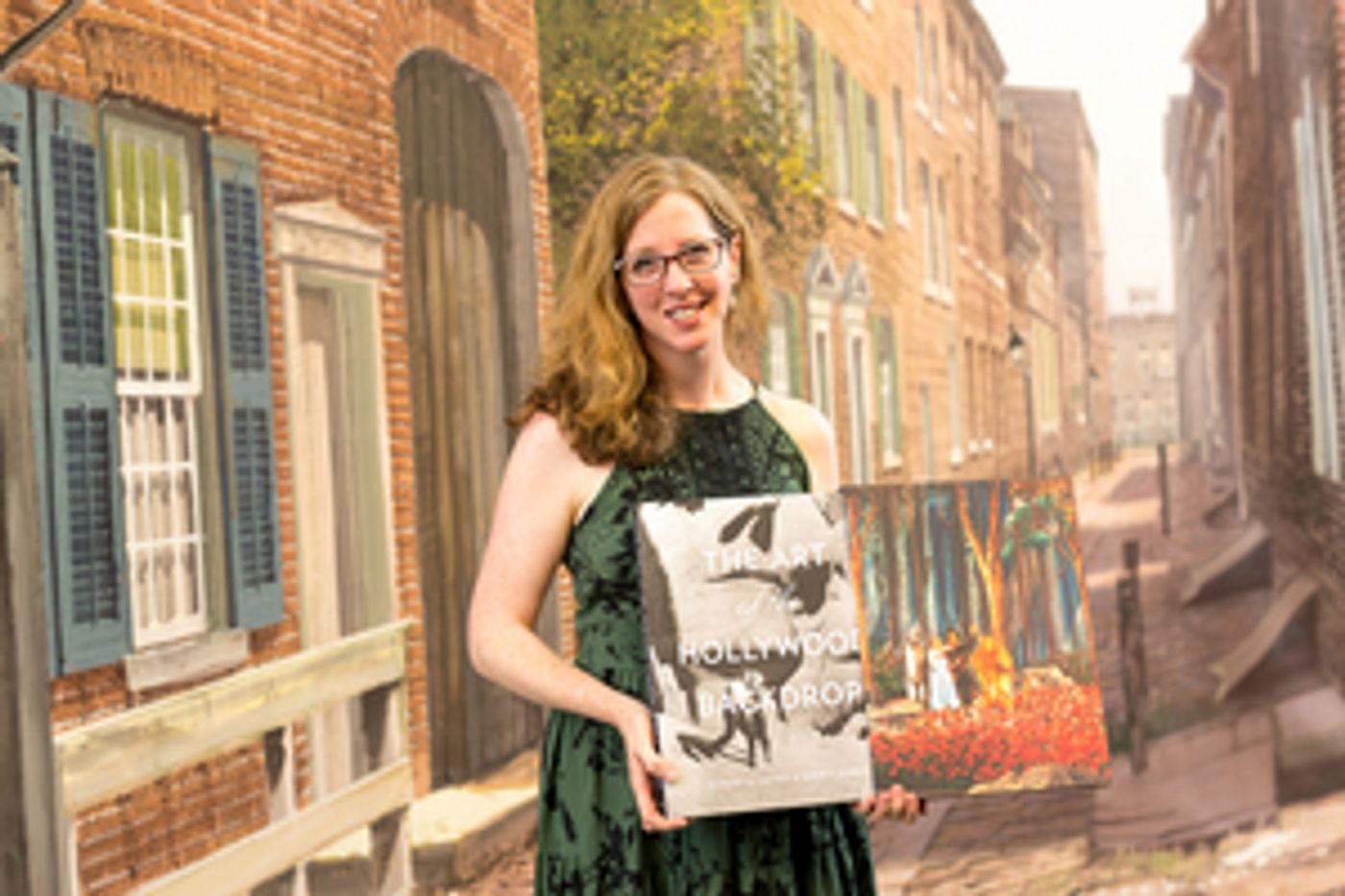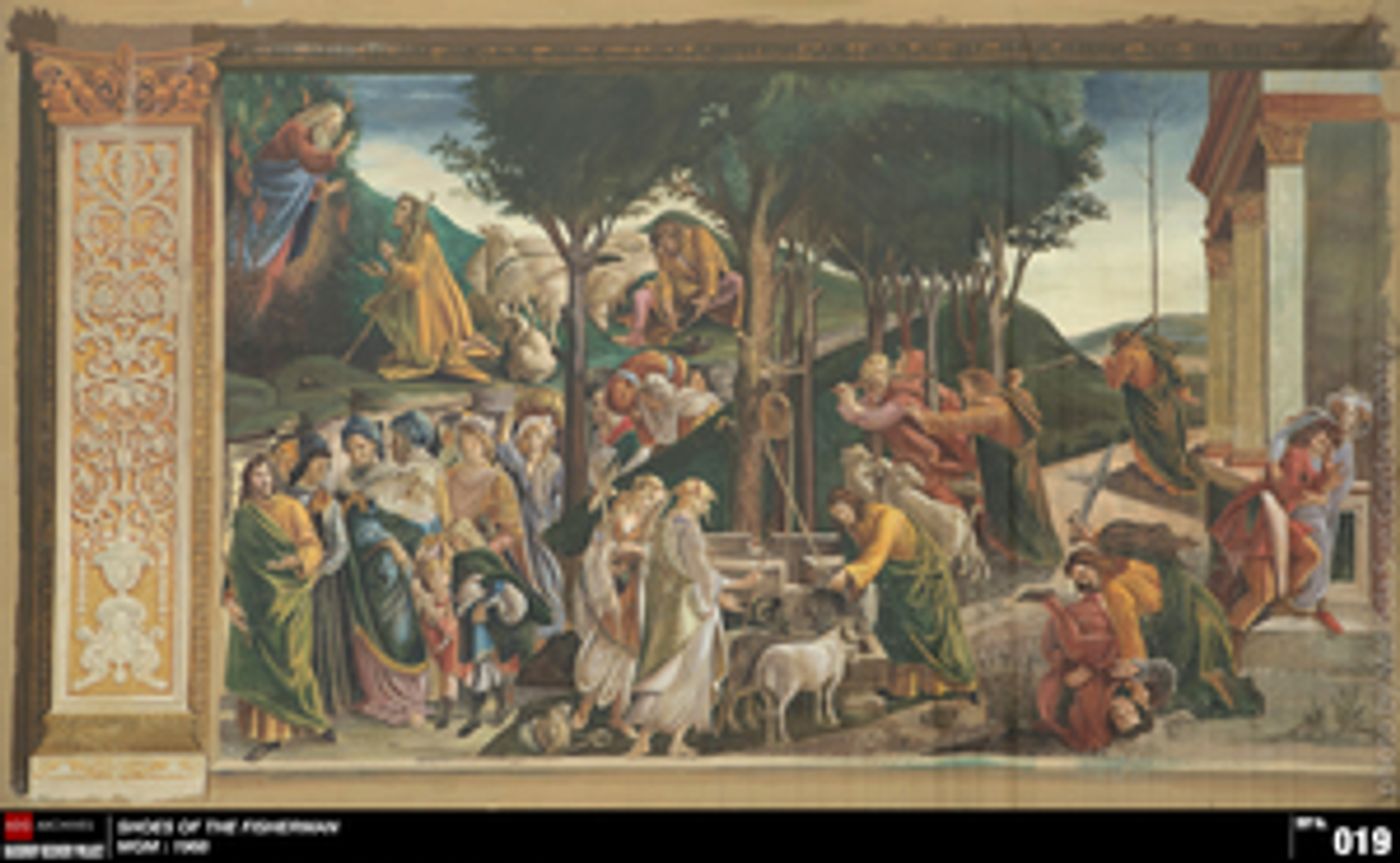Interview: Karen Maness, Texas Performing Arts (TPA) Scenic Art Supervisor talks McNay Art Museum and TPA partnership
McNay Art Museum Partners with Texas Performing Arts


In a first-time collaboration, the McNay Art Museum and Texas Performing Arts join together to debut six rare hand-painted, sound-stage backdrops from Metro Goldwyn Mayer (MGM) Studios alongside artworks from The Tobin Collection of Theatre Arts in the Museum's latest exhibition, Hollywood's Sistine Chapel: Sacred Sets for Stage & Screen. The exhibition is on view in the Tobin Theatre Arts and Brown Galleries from September 10, 2020 through April 4, 2021.
Karen L. Maness is a UT Lecturer and Texas Performing Arts Scenic Art Supervisor. Maness is the co-author of "The Art of The Hollywood Backdrop," the definitive behind-the-scenes history of Hollywood's cinematic backdrops and the scenic artists who brought them to the big screen. BWW recently caught up with Karen Maness to discuss how this all came about.
This is an amazing opportunity. I found myself lost in all the backdrops that were used for movies in the past. How did you find out about the backdrops?
I came to know about the MGM backdrops during my research for my book "The Art of The Hollywood Backdrop." In 2017, I joined the Art Directors Guild Archives in documenting more than 200 MGM Golden Age backdrops donated to the Art Directors Guild Backdrop Recovery Project.
What made you take the leap and utilize these one-of-a-kind paintings for your students at the University of Texas in Austin?
I have a deep affection for large scale painting and the unique craft of scenic art. These MGM Hollywood Golden Age backdrops are genuinely unique. The artists who painted them were considered the best in their field. This period of Hollywood motion picture scenic art represents the High Renaissance of the discipline. The artists possessed masterful skills in atmospheric and linear perspective coupled with a sophisticated understanding of color and value structures derived from years of observational Plein Air painting. I have been teaching scenic art at UT Austin for 20 years and have been a painter my whole life. When it became clear that our students could learn from these master artists' works, I knew they would have to find a way to come to Texas. Texas Performing Arts at UT Austin now has one of the largest groupings of historic Hollywood backdrops to study from in the world.
What do you know about the painters involved in the particular backdrops from "The Shoes of the Fisherman," starring Anthony Quinn? They are stunning.
In 1967, Scenic Art Supervisor George Gibson supervised the painting of Sistine Chapel backdrops for MGM's 1968 film, "The Shoes of a Fisherman." Gibson's daughter shared a story of her father receiving an emergency phone call from the location-based film crew in Italy, saying, "George!" "We need you to paint the Sistine Chapel and ship it over here ASAP!!," after their access to shoot in the historic space was denied.
Gibson enlisted his top MGM scenic artists to recreate the historic frescoes, with Clark Provins leading the painting of the entire suite of the Sistine Chapel interior backdrops. F. Wayne Hill executed much of the drawing, working alongside journeymen scenic artists Harry Tepker and Albert J. Londraville. Czech artist Jerry Gebr was hired to paint the key portraits. Gebr worked with a team of six scenic artists who projected, laid in the drawing, and added a base color to advance his detailed work. Gebr would move on to become the head of the Universal's scenic art studios painting for hundreds of films, including critical paintings for Alfred Hitchcock films, the iconic paintings for "Night Gallery," and the memorable poster portraits for "The Sting." Even scenic art legend Ronald Strang stepped away from Warner Bros. for one month to help the MGM artists meet their deadline for completion in time to ship to Rome.
Tell us a little bit about the collaboration with the Tobin Theatre Arts Fund and the McNay Museum in San Antonio, Texas.
(This question was answered by R. Scott Blackshire, Ph.D., Durator, The Tobin Collection of Theatre Arts).
The Tobin Theatre Arts Fund was created through a bequest of the late Robert L.B. Tobin, arts patron to San Antonio, Santa Fe, and New York City. For two decades, The Tobin Theatre Arts Fund has supported creative ventures according to Robert L.B. Tobin's belief that the theatre arts are as beautiful and important as fine art. The more than 14,000 objects and rare books in The Tobin Collection of Theatre Arts at the McNay Art Museum span 400 years and represent excellence in costume, scenic, and lighting design for opera, ballet, theatre, and more.
Will there be other backdrops featured at the McNay Museum or any other art museum in the near future?
Stay tuned!
Tell us how the public can view these masterpieces.
Visit the McNay Museum of Art to view Hollywood's Sistine Chapel: Sacred Scenes for the Stage and Screen. The exhibit runs September 10, 2020, through April 4, 2021. UT Austin students can visit for free with their student IDs.
This exhibition grants the public its first opportunity to see these historic motion picture painted backdrops in person. Do not miss your chance to witness Hollywood's Golden Age history in conversation with scenic models and Renaissance works from the McNay's core collection.
PHOTO CREDIT: Art Directors Guild
Videos

